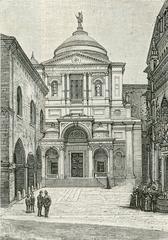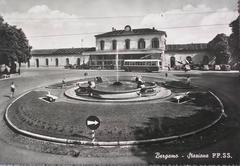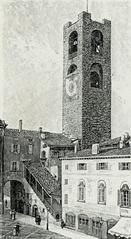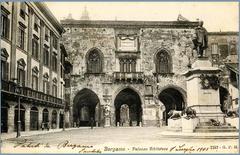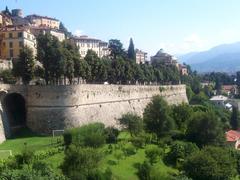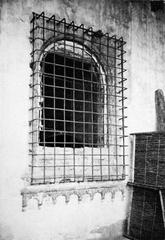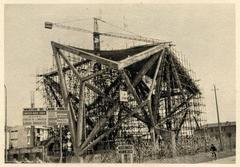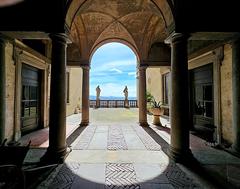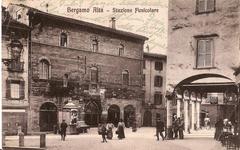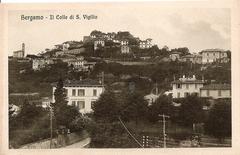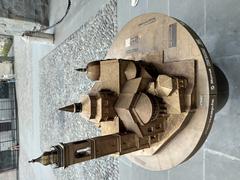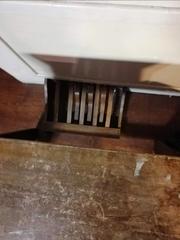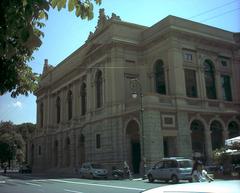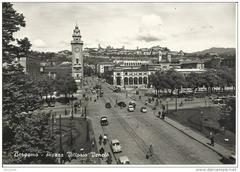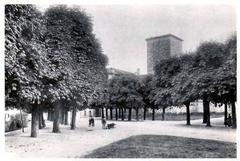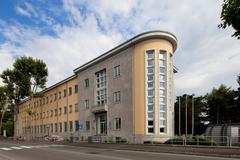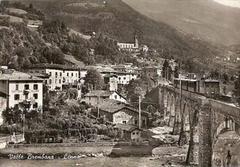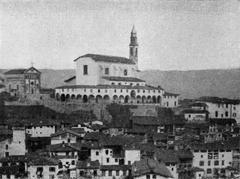Monumento Naturale della Valle del Brunone Visiting Guide: Hours, Tickets, and Tips
Date: 25/07/2024
Introduction
Nestled in the scenic Valle Imagna of Bergamo, Italy, the Monumento Naturale della Valle del Brunone is a hidden gem that offers a unique blend of natural beauty and historical significance. This natural monument, dating back to the Triassic period, is a treasure trove of paleontological deposits and ancient sulphur springs. The valley’s fossil beds, which date back approximately 237 to 201 million years, have yielded numerous specimens that provide invaluable insights into the flora and fauna of the Upper Triassic period (Museo Valdimagnino). Additionally, the valley’s ancient sulphur springs, once famous for their purported health benefits, add to its historical allure (Wikipedia).
The Valle del Brunone has been known by various names throughout history, including Scanarola, and was officially documented as early as 1863 (Museo Valdimagnino). This area is not only of local importance but has also garnered international attention, making it a site of global paleontological interest. The valley is part of the ‘Triassic II’ network, which includes several other significant paleontological sites and museums, such as the Museo Civico di Scienze Naturali E. Caffi in Bergamo and the Parco Paleontologico di Cene (Museo Valdimagnino).
In addition to its rich historical and scientific value, the Valle del Brunone offers numerous educational and recreational opportunities. Visitors can explore well-marked trails that lead to various points of interest, including the sulphur springs and fossil beds. Informational signage along these trails provides context and details about the valley’s historical significance, making it a suitable destination for family outings and educational field trips (Museo Valdimagnino). Whether you’re a history enthusiast, a nature lover, or just looking for a unique day trip, the Monumento Naturale della Valle del Brunone has something to offer.
Table of Contents
Historical Significance
Paleontological Riches
The Monumento Naturale della Valle del Brunone is renowned for its significant paleontological deposits, which date back to the Upper Triassic period. This era, approximately 237 to 201 million years ago, is crucial for understanding the evolution of life on Earth. The valley’s fossil beds have yielded numerous specimens that provide insights into the flora and fauna of that time. These findings are not only of local importance but have also garnered international attention, making the valley a site of global paleontological interest (Museo Valdimagnino).
Sulphur Springs
In addition to its paleontological significance, the Valle del Brunone is home to ancient sulphur springs. These springs were particularly famous in the 19th century for their purported health benefits. Although they are now largely inactive, their historical importance remains. The springs were once a destination for those seeking therapeutic treatments, contributing to the area’s reputation and drawing visitors from various regions (Wikipedia).
Historical References
The valley has been known by various names throughout history. Locally referred to as Scanarola, it was officially documented as Valle Brunone as early as 1863. This historical reference underscores the long-standing recognition of the valley’s unique natural features and its importance to the local community (Museo Valdimagnino).
Integration into the ‘Triassic II’ Network
The Monumento Naturale della Valle del Brunone is part of the ‘Triassic II’ network, which includes several other significant paleontological sites and museums. This network aims to preserve and promote the understanding of the Triassic period through coordinated efforts among various institutions. Key members of this network include the Museo Civico di Scienze Naturali E. Caffi in Bergamo, the Parco Paleontologico di Cene, and the Museo Brembano di Scienze Naturali in San Pellegrino Terme. This integration highlights the valley’s importance within a broader context of scientific research and education (Museo Valdimagnino).
Archaeological Discoveries
The valley has also been the site of various archaeological discoveries, further enhancing its historical significance. These findings provide a glimpse into the human activities that have taken place in the region over the centuries. The combination of paleontological and archaeological evidence makes the Valle del Brunone a rich tapestry of natural and human history.
Conservation Efforts
Recognizing its historical and scientific value, the Valle del Brunone has been designated as a protected natural area. This status helps ensure the preservation of its unique geological and paleontological features for future generations. Conservation efforts are crucial in maintaining the integrity of the site and allowing ongoing research and educational activities to continue (Parco dei Colli di Bergamo).
Educational and Recreational Opportunities
The valley offers numerous opportunities for both education and recreation. Visitors can explore well-marked trails that lead to various points of interest, including the sulphur springs and fossil beds. Informational signage along these trails provides context and details about the valley’s historical significance. Additionally, the area is equipped with picnic facilities, making it a suitable destination for family outings and educational field trips (Museo Valdimagnino).
Local Cultural Impact
The historical significance of the Valle del Brunone extends to its impact on local culture. The valley has been a part of the community’s identity for generations, influencing local traditions and practices. The presence of the sulphur springs, in particular, has left a lasting legacy, with stories and folklore surrounding their use and benefits being passed down through the years.
Visitor Information
Accessibility and Visitor Information
The Valle del Brunone is easily accessible from the main road leading to Valle Imagna. The most straightforward access point is near the sports field of Ponte Giurino, where a well-marked trail leads to the sulphur springs. This trail follows the course of the Brunone stream and offers a relatively easy hike, although some sections require more attention due to rocky steps and small waterfalls. The network of loop trails within the valley allows visitors to explore its various features at their own pace (Museo Valdimagnino).
Ticket Prices
As of the latest update, entrance to the Monumento Naturale della Valle del Brunone is free of charge. However, visitors are encouraged to check the official website or contact local authorities for the most current information on any potential fees for guided tours or special events.
Opening Hours
The valley is open to visitors year-round, but it is advisable to visit during daylight hours to fully appreciate the natural beauty and historical sites. Specific opening hours for guided tours or the visitor center, if available, should be confirmed through the official website or local tourism office.
Travel Tips
- Best Time to Visit: The best time to visit is during the spring and autumn months when the weather is pleasant and the trails are more accessible.
- What to Bring: Comfortable hiking shoes, water, and a camera to capture the stunning scenery.
- Local Cuisine: Consider trying local specialties at nearby restaurants in Valle Imagna for an authentic culinary experience.
Nearby Attractions
While in the area, visitors can explore other nearby attractions such as the Parco dei Colli di Bergamo, the historic town of Bergamo, and the various museums and parks within the ‘Triassic II’ network.
Special Events and Guided Tours
Occasional special events and guided tours are organized to provide a deeper understanding of the valley’s historical and scientific significance. Check the official website or local tourism office for schedules and booking information.
Photographic Spots
The valley offers numerous picturesque spots perfect for photography, including the scenic trails, the sulphur springs, and the fossil beds. Be sure to capture the unique geological formations and the lush natural surroundings.
FAQ
What are the visiting hours for Monumento Naturale della Valle del Brunone?
The valley is generally open year-round during daylight hours. For specific opening hours of guided tours or the visitor center, check the official website or contact local authorities.
How much are the tickets for Monumento Naturale della Valle del Brunone?
Entrance to the valley is currently free, but fees may apply for guided tours or special events. Please verify the latest information on the official website or by contacting local tourism offices.
Conclusion
Whether you’re a history enthusiast, a nature lover, or just looking for a unique day trip, the Monumento Naturale della Valle del Brunone has something to offer. By promoting sustainable tourism and fostering a sense of stewardship among visitors, we can ensure that the natural wonder of the Valle del Brunone remains preserved. Plan your visit today to experience the awe-inspiring beauty and scientific significance of this remarkable natural monument.
